New York Times publisher Arthur Sulzberger Jr., who is worried about the “sustainability” of the paper, will face a packed house of 624 at the Kaye Playhouse at Hunter College at 6 p.m. June 15.
|
|
A capacity audience has already taken all the seats according to this notice on the Hunter website:
THIS PROGRAM IS OVERSUBSCRIBED If you would like to be added to our waiting list, please complete the online registration form. If space becomes available, we will contact you.
We have suggestions and questions for Sulzberger that we will send in advance to him via his seven PR staffers headed by VP-CC Eileen Murphy.
Readers can append questions to this blog or send them to [email protected].
The program will last until 7:30 p.m. with a half hour alloted for questions from the audience, a Hunter spokesperson said.
|
|
Jack Rosenthal, interim director of Roosevelt House at Hunter, will interview Sulzberger and Dean Baquet, executive editor. Rosenthal, who joined NYT in 1968 and was its first national urban affairs correspondent, joined the editorial board in 1977 and edited the NYT magazine from 1993-2000.
Panel of Outsiders Needed
This program sounds like too much of a love-in. Fellow employees talking to each other about the problems of NYT is like a sick person being tended to by non-medical relatives.
Outsiders who should grill Sulzberger and Baquet could include Arianna Huffington of HuffPost, Jim Romenesko of his own media oriented website, and Gabrielle Bluestone of Gawker.
|
|
NYT lost $14.3 million in Q1 partly because of a $40.3M pension charge for payments to nearly 100 employees who were offered retirement packages, some getting two years’ pay. Ad sales declined 5.8%. Print ad sales fell 11.1% while digital spots gained 10.7% to $42.3M representing 28.2% of ad income. Debt is $427M. NYT stock, as high as $70 in 1997, is now $13.
The $14.3 loss compared with a $1.7M profit in the same 2014 period. Revenues slipped 1.6% to $384.2M.
Here Are Questions and Advice from Us
|
|
1. Stop trying to be a daily newsmagazine. You can’t afford it. Look what happened to Newsweek, USNews & World Report and is happening to Time. Your 64-page issue May 2 had 163 color and B&W pictures, about one-third of the “news hole.”
2. Start putting tinyurl-type links in print stories to documents, previous stories and databases. NYT could have a custom shortened link. Only the last seven letters and numbers change. Web stories often have 10-20 such links. Print stories are an outmoded form of journalism without such links. Heavy use of color pictures does not make up for such a lack.
3. Write tight. Get to the point and stop sermonizing and trying to place stories “in context.” Cut pages to 36 or fewer a day and two sections and reduce price to $1. Wordiness is driving readers from the paper, wrote Michael Kinsley.
4. Remember your mission. Readers want the news, investigations and explanations. We already have plenty of color pix in our smartphones, TV and mags. Books don’t have pix. Graphics won’t attract younger readers.
5. Stop using editorial space to promote one cause or another. Put views on editorial pages and give equal space to various factions. Stop the daily bashing of Hillary Clinton.
6. Assign a senior business writer to do an ad/PR column. Current advertising-only reporter, Sydney Ember, is a 2012 college grad. Recognize the importance of PR/communications/social media.
7. Have regular press conferences in which Sulzberger and senior editors face the public. Require that writers to put their emails at the end of stories a la New York Post and other media.
8. Restore the bridge and chess columns. Bridge was a daily column for many years before being cut to three times a week. Be the “thinking person’s” newspaper. Dropping bridge was cruel to seniors who looked forward to the daily puzzles bridge hands presented. Someone from American Contract Bridge League would gladly write the column without charge. ACBL, with net assets of $7.7 million including investments and cash of $7.2M, should be a paid sponsor of the column using the T Brand Studio of NYT which accepts paid posts. Previous columnist Phillip Alder, who often reported on bridge tournaments throughout the U.S., reportedly was paid more than $100K.
9. The “pop-up” ads on the NYT and other websites are becoming a major annoyance to users. This intrusive technique needs to be curbed.
10. Stop ducking major stories like the Tylenol murders of 1982-86 and the $1 million+ battle over an eruv Jewish boundary in the Hamptons.
Art Dept. Became Dominant
Some critic is sure to ask how the art department became so dominant at NYT.
A response by reader David Engle in the May 17 Wall Street Journal, which had written a piece praising bridge, said: “It is stunning to me that NYT stopped the column. I can’t think of any other decision that NYT has made that I disagree more with. Perhaps WSJ could sign Phillip Alder so he could continue this incredible column.”
The program is hosted by Hunter president Jennifer Raab. Baquet replaced Jill Abramson as executive editor last May.
Abramson, the first woman to hold that post in the history of NYT, was ousted after being on the job since September 2011.
NYT Worries About “Sustainability”
Hunter's announcement of the appearance by Sulzberger and Baquet said that while NYT “remains a premier source of news and information and has won 117 Pulitzer Prizes,” it is competing “in an era when online communications giants measure their revenues in many billions” and “questions inevitably arise about the sustainability of The Times, news and business questions to be discussed at this evening.”
Digital subscribers grew 47,000 to 957,000, said CEO Mark Thompson who said NYT “got off to a solid start in early 2015” as it maintained digital momentum.

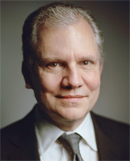


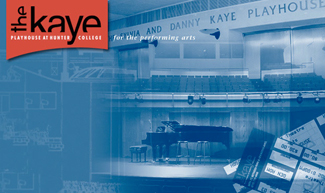

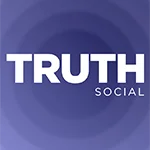 Trump Media & Technology Group today reported a $58.2M net loss on $4.1M in 2023 revenues, a disclosure that drove its stock price down 22.6 percent to $47.96.
Trump Media & Technology Group today reported a $58.2M net loss on $4.1M in 2023 revenues, a disclosure that drove its stock price down 22.6 percent to $47.96. Barry Pollack, an attorney at Wall Street’s Harris St. Laurent & Wechsler, has registered Julian Assange as a client with the Justice Dept. “out of an abundance of caution.”
Barry Pollack, an attorney at Wall Street’s Harris St. Laurent & Wechsler, has registered Julian Assange as a client with the Justice Dept. “out of an abundance of caution.” Paramount Global to slash 800 jobs in what chief executive Bob Bakish calls part of an effort to “return the company to earnings growth"... Rolling Stone editor-in-chief Noah Shachtman is exiting at the end of the month due to disagreements with chief executive Gus Wenner over the direction the magazine is taking... The New York Times broke the $1 billion barrier in annual revenue from digital subscriptions in 2023... Press Forward is investing more than $500 million to strengthen local newsrooms.
Paramount Global to slash 800 jobs in what chief executive Bob Bakish calls part of an effort to “return the company to earnings growth"... Rolling Stone editor-in-chief Noah Shachtman is exiting at the end of the month due to disagreements with chief executive Gus Wenner over the direction the magazine is taking... The New York Times broke the $1 billion barrier in annual revenue from digital subscriptions in 2023... Press Forward is investing more than $500 million to strengthen local newsrooms.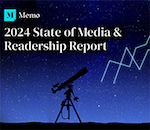 The majority of news articles are read within the first three days of publication, according to a recent report.
The majority of news articles are read within the first three days of publication, according to a recent report.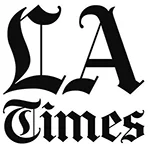 The Los Angeles Times gives pink slips to 115 people or 20 percent of its newsroom staff... TIME is also laying off about 30 employees, which is approximately 15 percent of its editorial staff... The Baltimore Banner, which was launched by Stewart Bainum in 2022 after he failed to buy the Baltimore Sun, added 500 subscribers per day in the three days following Sinclair Broadcast Group's deal to purchase the Sun.
The Los Angeles Times gives pink slips to 115 people or 20 percent of its newsroom staff... TIME is also laying off about 30 employees, which is approximately 15 percent of its editorial staff... The Baltimore Banner, which was launched by Stewart Bainum in 2022 after he failed to buy the Baltimore Sun, added 500 subscribers per day in the three days following Sinclair Broadcast Group's deal to purchase the Sun.


 Have a comment? Send it to
Have a comment? Send it to 
No comments have been submitted for this story yet.